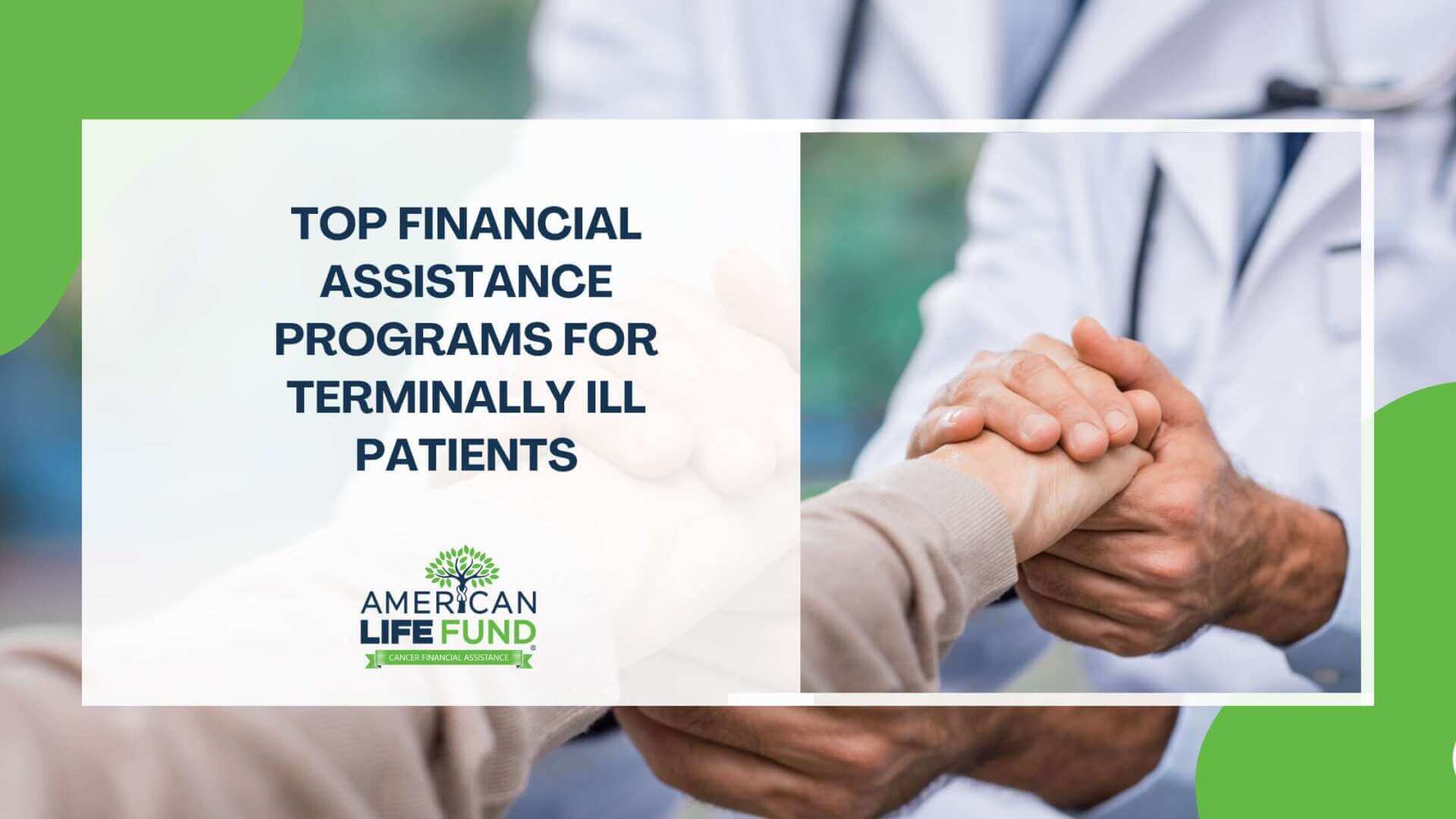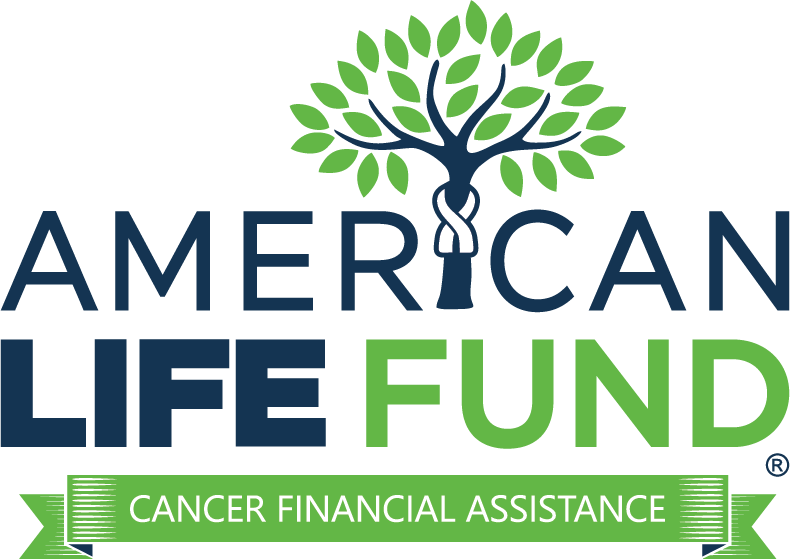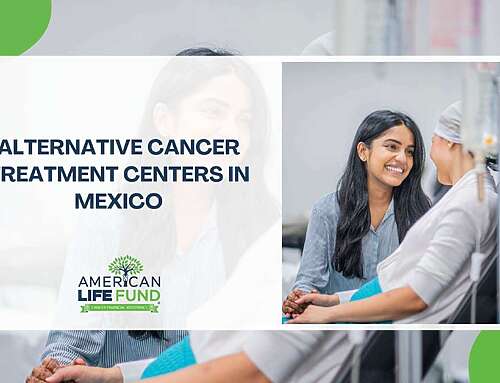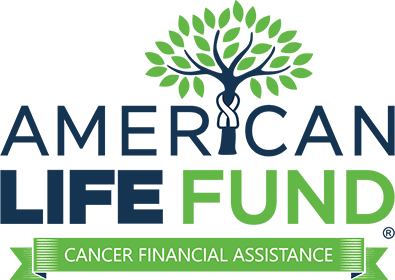
Facing a terminal illness like a cancer diagnosis is one of the most challenging experiences anyone can endure. Beyond the emotional and physical hardships, the financial challenges can be overwhelming. If you or a loved one is navigating this difficult journey, know that you’re not alone.
At American Life Fund, we understand the immense strain that terminal illnesses place on patients and their families. That’s why we’ve put together this guide to financial assistance for terminally ill patients. In this resource, we’ll cover various financial options, including grants, viatical settlements, government programs, and more. Our goal is to help alleviate the monetary strain so you can focus on what truly matters.
What to Expect Financially as a Terminally Ill Patient
The costs associated with treating a life-threatening illness are substantial. For instance, the average cost of cancer treatment can range from $150,000 to over $300,000 per patient in the United States.¹ This figure varies depending on the type of cancer, stage at diagnosis, and the treatment regimen prescribed.
Even with health insurance, patients and families often face significant out-of-pocket expenses. These can include deductibles, co-payments, and costs for services with limited coverage. On average, out-of-pocket expenses for cancer patients can exceed $12,000 annually, not accounting for lost income due to inability to work.²
Breakdown of Costs
Here’s a closer look at what contributes to these high expenses:
- Hospital Care: Inpatient hospital stays are a major expense. The average cost for a hospital admission related to cancer is approximately $31,390 per stay.³
- Medications and Treatments: The price of chemotherapy drugs and targeted therapies can be exorbitant. Some medications cost $10,000 to $30,000 per month, and newer immunotherapies can be even more expensive.⁴
- In-Home Caregivers: Hiring professional caregivers to assist with daily activities can cost between $4,000 and $6,000 per month.⁵
- Medical Supplies and Equipment: Necessary items like hospital beds, mobility aids, and medical supplies can add up to $5,000 to $10,000 or more over the course of treatment.⁶
- Transportation Costs: Frequent travel to treatment centers can result in expenses averaging $2,500 annually, especially if specialized care is only available far from home.⁷
- Home Modifications: Adjustments to the home to accommodate medical equipment or accessibility needs can cost $3,000 to $15,000.⁸
Insurance Coverage and Out-of-Pocket Costs
While health insurance may cover a significant portion of medical expenses, it’s estimated that:
- Insurance covers about 70% to 80% of total medical costs.
- Charitable organizations may contribute around 5% through grants and assistance programs.
- Patients and families are responsible for the remaining 15% to 25%, which can amount to $22,500 to $75,000 or more over the course of treatment.
These figures do not account for indirect costs such as:
- Lost Income: Patients and family members may reduce work hours or stop working, leading to decreased household income.
- Additional Living Expenses: Increased utility bills, special dietary needs, and other daily living expenses.
- Emotional and Psychological Costs: Stress and mental health challenges may require counseling or therapy services.
How Viatical Settlements Help Terminally Ill Patients
What many people may not realize is that a life insurance policy is considered a financial asset that you own. This means policyholders can sell their life insurance for a lump-sum cash payment through a viatical settlement.
With a viatical settlement, the funds received are typically tax-free and unregulated, allowing you to decide how to use the money. You can cover medical expenses, pay for health insurance premiums, manage living expenses, or even take a meaningful trip with loved ones. The choice is uniquely yours.
How it works: Terminally ill patients with life-threatening conditions can sell their life insurance policies to third-party buyers in return for a lump-sum payment. The viatical settlement company then takes over paying the monthly insurance premiums and receives the death benefit after the seller’s passing.
If you’re considering selling your life insurance policy, American Life Fund is here to help. Our primary goal is to alleviate the financial burden associated with terminal illness care, reducing stress, and enabling you to spend more time on the things that matter.
Through our hassle-free process, we’ll help you get an immediate cash offer for your insurance policy.
Other Types of Financial Help for Terminally Ill Patients
There are numerous organizations and programs that offer free money and financial assistance to terminally ill patients. Below is a comprehensive list of resources to help you navigate available options.
Charitable Foundations and Organizations That Help Terminally Ill Patients
Nonprofit organizations play a crucial role in providing financial assistance, support services, and resources to patients and families dealing with terminal illnesses. They offer direct financial assistance to help cover medical treatment costs, health insurance premiums, medical supplies, transportation costs, and other health-related expenses.
Some of these organizations include:
- American Cancer Society: Offers programs like Hope Lodge, providing free lodging for cancer patients and their caregivers during treatment.
- CancerCare: Provides financial assistance for co-payments, transportation, home care, and child care, as well as counseling services.
- The Leukemia & Lymphoma Society: Offers co-pay assistance and financial aid for blood cancer patients.
- HealthWell Foundation: Provides financial assistance to underinsured patients for prescription co-pays, insurance premiums, and other out-of-pocket costs.
- Patient Advocate Foundation: Offers co-pay relief programs and case management services to help patients navigate healthcare expenses.
- United Way: Connects individuals to local health and human services, including financial support for basic needs.
These organizations often have eligibility criteria based on factors like income level, diagnosis, and insurance status. It’s essential to reach out directly to understand the specific assistance available.
Government Assistance
A government program offering assistance is a vital source of financial aid for terminally ill patients. Programs such as Social Security Disability Insurance (SSDI) and Supplemental Security Income (SSI) provide monthly cash benefits to eligible individuals.
- SSDI: Available to individuals who have worked and paid Social Security taxes but can no longer work due to a medical condition expected to last at least one year or result in death.
- SSI: Provides monthly payments to adults and children with a disability or blindness who have income and resources below specific financial limits.
- Medicare: A federal health insurance program for people 65 and older, as well as some younger individuals with disabilities. It helps cover hospital care, medical services, and prescription drugs.
- Medicaid: A joint federal and state program that helps with medical costs for people with limited income and resources. It may offer benefits not covered by Medicare, including long-term care services and support.
To apply for these programs, contact your local Social Security office or visit their website for up-to-date information.
Drug & Equipment Assistance
Managing a terminal illness often requires expensive medications and medical equipment. Several resources can help reduce or eliminate these costs:
- Pharmaceutical Companies: Many offer patient assistance programs providing free or discounted medications. The Medicine Assistance Tool can help you find these resources.
- Partnership for Prescription Assistance (PPA): Offers a single point of access to public and private programs that provide free or low-cost prescription drugs.
- NeedyMeds: Provides information on assistance programs and offers a free drug discount card to save on prescriptions.
- Equipment Loan Programs: Organizations like the Muscular Dystrophy Association and your local health department may offer medical equipment loans for items like wheelchairs, hospital beds, and other necessary supplies.
- Dental Clinics: Some nonprofit organizations and dental schools provide low-cost or free dental care, which is essential for overall health during treatment.
Conclusion
While facing a terminal illness is undeniably challenging, numerous resources are available to help alleviate the financial burden. From charitable grants and government programs to viatical settlements, patients and families can find financial assistance to support medical treatment and daily living expenses.
At American Life Fund, we are committed to helping you handle these options to reduce stress and improve your quality of life. By exploring these resources, you can focus on what truly matters—spending time with loved ones and making meaningful memories.
Our dedicated team is here to guide you through the easy application process and help you reclaim your financial freedom.
Frequently Asked Questions
Are terminally ill patients eligible for disability benefits?
Yes, terminally ill patients are typically eligible for expedited processing of disability benefits through the Social Security Administration’s Compassionate Allowances program. This program allows for faster determination of SSDI and SSI benefits for individuals with severe medical conditions.
What health insurance options are available for terminally ill patients?
In addition to private health insurance, terminally ill patients may qualify for government-sponsored programs like Medicare and Medicaid. Medicare provides coverage for individuals over 65 or those receiving SSDI benefits, while Medicaid offers assistance to low-income individuals and may cover services not included in Medicare.
Do health insurers cover the cost of medications and treatments for terminal illnesses?
Coverage varies by insurer and policy, but many health insurance plans cover FDA-approved medications and treatments for terminal illnesses. It’s important to review your health insurance policy and work with your healthcare provider to obtain necessary prior authorizations.
How can I obtain durable medical equipment for care?
Durable medical equipment (DME) like wheelchairs, hospital beds, and oxygen equipment can be obtained through:
- Insurance Coverage: Many health insurance plans, including Medicare and Medicaid, cover prescribed DME.
- Charitable Organizations: Nonprofits may offer equipment loan programs or grants.
- State Assistive Technology Programs: Provide access to equipment loans and financial assistance for purchasing DME.
What organizations offer financial help to terminally ill patients?
Several nonprofit organizations provide financial assistance, including:
- CancerCare
- The Leukemia & Lymphoma Society
- Patient Advocate Foundation
- HealthWell Foundation
- NeedyMeds
Can terminally ill patients receive government assistance?
Yes, programs like SSDI, SSI, Medicare, and Medicaid offer financial support and health coverage to eligible individuals, helping to cover medical and living expenses.
How do viatical settlements benefit terminally ill patients?
Viatical settlements allow terminally ill patients to sell their life insurance policies for a lump-sum, tax-free cash payment. This provides immediate financial relief and flexibility to cover expenses, reducing stress during a challenging time.
Are there resources for transportation and lodging during treatment?
Yes, organizations like the American Cancer Society offer programs to assist with transportation to treatment centers and provide lodging for patients and families who need to travel for care.
Do social workers provide assistance in navigating financial resources?
Absolutely. Hospital and clinic social workers can help patients and families find resources, apply for assistance programs, and provide support during treatment.
How can I find up-to-date information on available resources?
Consult with your healthcare team, including case managers and social workers, who often have lists of programs and other resources. Websites of nonprofit organizations and government agencies also provide up-to-date information on financial assistance.
What support is available for young adults with terminal illnesses?
Organizations like Stupid Cancer and Young Survival Coalition offer support specifically for young adults facing terminal illnesses, providing resources, community connections, and financial assistance.
Sources:
- National Cancer Institute: “Cancer Costs and Economic Burden.”
https://www.cancer.gov/about-cancer/managing-care/track-care-costs/cancer-care-costs-fact-sheet - American Cancer Society: “Managing the Costs of Cancer Treatment.”
https://www.cancer.org/treatment/finding-and-paying-for-treatment/managing-costs.html - Agency for Healthcare Research and Quality (AHRQ): “Cancer-Related Hospitalizations.”
https://www.hcup-us.ahrq.gov/reports/statbriefs/sb213-Cancer-Hospitalizations-2014.pdf - Journal of Oncology Practice: “The Cost of Cancer Drugs and What We Can Do About It.”
https://ascopubs.org/doi/full/10.1200/JOP.2016.019737 - Genworth Financial: “Cost of Care Survey.”
https://www.genworth.com/aging-and-you/finances/cost-of-care.html - Medicare.gov: “Durable Medical Equipment Coverage.”
https://www.medicare.gov/coverage/durable-medical-equipment-dme-coverage - CancerCare: “Transportation Resources.”
https://www.cancercare.org/financial/information - HomeAdvisor: “Cost to Remodel for Disability Accommodation.”
https://www.homeadvisor.com/cost/disability-accommodation/remodel-for-disability-accommodation/





